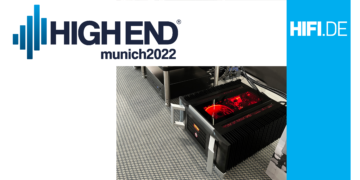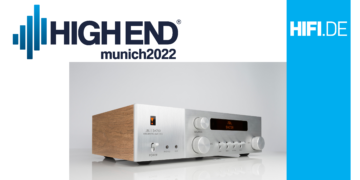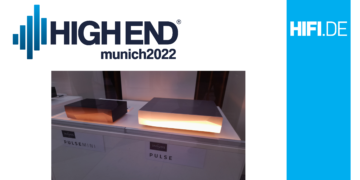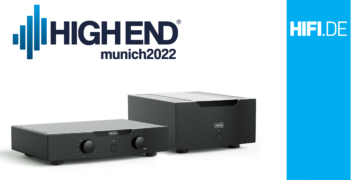| HIFI-FORUM » English » Stereo (Engl.) » Lyritas budget HiFi | |
|
|
||||
Lyritas budget HiFi+A -A |
||
| Autor |
| |
|
viren
Stammgast |
#101
erstellt: 10. Jul 2007, 15:37

|
|
|
Hi Kamal, Thanks. Actually, the design of the cables is pretty straightforward. I believe that solid-core conductors carry the music signal better. And a single conductor is preferable, since then there no boundaries to cross. The interconnects use 24-gauge pure copper conductors, encased in Teflon insulation. This thickness is within the skin effect thickness of audio frequencies - so the signal flows through the entire cross-section of the conductor. Silver-plated copper did not sound as good - because of dissimilar materials, and a discontinuity for the signal to cross, I assume. The speaker cables use 18-gauge pure copper single conductors. A bit of compromise, but have to lower the resistance somewhat. All the cables are unshielded - never had a problem in the home environment. The twist and weave adds a certain amount of shielding of the signal. I do not care for shielded signal cables. They tend to "fuzzy" up the sound, with loss in transparency. Of course, the proof is in the listening! Viren. |
||
|
Kamal
Stammgast |
#102
erstellt: 10. Jul 2007, 16:28

|
|
Yes indeed! And the listening so far has been amazing... |
||
|
|
||
|
Manek
Inventar |
#103
erstellt: 10. Jul 2007, 16:32

|
|
|
viren, as per your post you would prefer twisted pair or cables woven in a particular manner over the co-axial design interconnects(where shield also served as the negative) or what they call quasi balanced where the + and - are twisted pair conductors and the shield is connected to the - only at the source end. whats you take on these quasi balanced variety ? Manek. |
||
|
Amp_Nut
Inventar |
#104
erstellt: 11. Jul 2007, 02:46

|
|
|
Hi Viren, Nice of you to share your thoughts and design philosophy on Cable design. This field remains a black art. ( sometimes with a liberal dose of pseudo scientific Mumbo Jumbo.... I recall one such diner meeting in Mumbai, some months ago :-) } Viren said :
I had infact churned through the skin effect formula, and for around 24 guage and at 20 KHz, the signal penetration in the cable was just 0.2 mm or so, I think. I could be off the mark, because I had done the calulations several yeasrs ago, and my memory could be off-track. But the depth of penetration of the signal was certainly less than 1 mm @ 20 KHz One site quotes these figures for depth of signal penetration, without mentioning the conductor diameter :
Skin Effect : Only DC current flows uniformly throughout the cross section of a conductor. Alternating Current (AC) such as that for music ( 20 Hz to 20 KHz ) tends to flow more and more towards the outer surface or the 'Skin" of the conductor.  There ARE many manufacturers like Crystal who believe in thin conductors. ( Some tech gurus refute that Skin Effect comes into play at even 20 KHz ! So to each their own... Another point is that a larger conductor diameter reduces 'Current Crowding' due to high radius of curvature. { Current Crowding : Alternating Current ( AC ) tends to 'crowd' at sharp points and high curvature. A larger diameter also increases depth of signal penetration within the conductor..... And yes a single conductor is better than a bunch for reduced current crowding, and maybe inter-boundary conduction as you have mentioned. Just sharing my thoughts... not contradicting, so please do not mis-understand. I totally argree with you... the final proof of the pudding is in the eating  [Beitrag von Amp_Nut am 11. Jul 2007, 03:01 bearbeitet] |
||
|
Amp_Nut
Inventar |
#105
erstellt: 11. Jul 2007, 03:32

|
|
|
Hi Viren, I stand corrected ...  I just checked that 24 AWG = 0.5 mm diameter Hence that means at 20 KHz, (almost ) the entire conductor will be utilised . Cheers ! |
||
|
kptools
Hat sich gelöscht |
#106
erstellt: 11. Jul 2007, 05:08

|
|
|
Hallo, for more information about signaltransmission in Highfidelity, please look at here:  CableCalculator -> Inductance, Capacity, Skineffect CableCalculator -> Inductance, Capacity, SkineffectGrüsse aus OWL kp |
||
|
stevieboy
Stammgast |
#107
erstellt: 11. Jul 2007, 06:24

|
|
|
i second kamal's opinion. a pair of viren's interconnects comfortably outperforms the pair of audioquest king cobra interconnects i have. more detail with viren's interconnects, yet not fatiguing on the ear. and the killer is that its very very affordable too! |
||
|
abhi.pani
Inventar |
#108
erstellt: 11. Jul 2007, 06:57

|
|
|
hmmm..thats great to hear Steve. Atlast an affordable yet good cable solution available here for us. Great going Viren Sir  . . |
||
|
Arj
Inventar |
#109
erstellt: 11. Jul 2007, 08:22

|
|
|
Viren Sir, When would you be updating your website with these ? also any plans to work on a power cable ? |
||
|
stevieboy
Stammgast |
#110
erstellt: 11. Jul 2007, 08:30

|
|
i can get them over when you invite us to listen to your new gear  |
||
|
Manek
Inventar |
#111
erstellt: 12. Jul 2007, 04:22

|
|
|
whilst on this topic of solid core v/s stranded... A DIY power cord using 3 lengths of simple solid core copper wire, does nicely as well.... Manek. |
||
|
viren
Stammgast |
#112
erstellt: 12. Jul 2007, 07:32

|
|
|
Hi Manek, I have experimented a bit with coaxial cables - with a centre conductor and a braided shield. They never sounded as good as a simple twisted 2-conductor cable. I'm hypothesizing that coaxial cables work best for ultra high frequency signals - after all, this cable was made for TV transmission. The 100% coverage shield is important there to guard against RF pickup. Next best is the 2-conductor twisted pair, with a braided shield. This is typical of microphone cables, with long runs of upto 50 metres, and allows for balanced signals. At home, with unbalanced signals, use the twisted conductors as signal and ground, and connect the shield to ground only at the source. I think the loss in signal quality happens when the shield is used both as a return conductor and RF shield. Viren. |
||
| ||
|
|
||||
| Das könnte Dich auch interessieren: |
|
single and ready to mingle - lyrita listening session stevieboy am 16.02.2007 – Letzte Antwort am 11.03.2007 – 85 Beiträge |
|
Lyrita Audio Valve Amplifiers panditr am 04.04.2005 – Letzte Antwort am 05.04.2005 – 3 Beiträge |
|
single driver vs conventional speakers stevieboy am 24.10.2006 – Letzte Antwort am 26.10.2006 – 30 Beiträge |
|
LYRITA AUDIO' S NEW SET AMPLIFIER Kamal am 28.10.2007 – Letzte Antwort am 22.04.2008 – 55 Beiträge |
|
Floorstanders on a tight budget hemant3003 am 03.02.2005 – Letzte Antwort am 04.02.2005 – 13 Beiträge |
|
Revised Lyrita Audio site viren am 28.07.2006 – Letzte Antwort am 31.07.2006 – 13 Beiträge |
|
Recommendations for audio setup Nagaraj am 18.11.2004 – Letzte Antwort am 22.11.2004 – 9 Beiträge |
|
Bright amp with which speaker. Alymangy am 02.02.2005 – Letzte Antwort am 02.02.2005 – 12 Beiträge |
|
My experience with speakers from Sandeep bluemoon am 17.05.2005 – Letzte Antwort am 23.05.2005 – 10 Beiträge |
|
Listened to the Magico V2 & V3 speakers. bombaywalla am 02.06.2010 – Letzte Antwort am 13.07.2010 – 16 Beiträge |
Anzeige
Produkte in diesem Thread

Aktuelle Aktion
Top 10 Threads in Stereo (Engl.) der letzten 7 Tage

- Good speakers for old system
- Jamo Concert E750 and E770
- Replacing Stock Jumpers on NAD/Marantz
- FYI: Cadence latest price list
- One speaker "louder" than the other?
- TNT triple T loudspeaker cable
- Vincent SV 231
- Planar speakers
- Best Amp for Quad 11L? Nad vs Rotel vs Marantz vs CA
- Is Jamo E-series worth it?
Top 10 Threads in Stereo (Engl.) der letzten 50 Tage

- Good speakers for old system
- Jamo Concert E750 and E770
- Replacing Stock Jumpers on NAD/Marantz
- FYI: Cadence latest price list
- One speaker "louder" than the other?
- TNT triple T loudspeaker cable
- Vincent SV 231
- Planar speakers
- Best Amp for Quad 11L? Nad vs Rotel vs Marantz vs CA
- Is Jamo E-series worth it?
Top 10 Suchanfragen

Forumsstatistik

- Registrierte Mitglieder928.157 ( Heute: 12 )
- Neuestes Mitgliedtommytipper
- Gesamtzahl an Themen1.557.592
- Gesamtzahl an Beiträgen21.682.594














